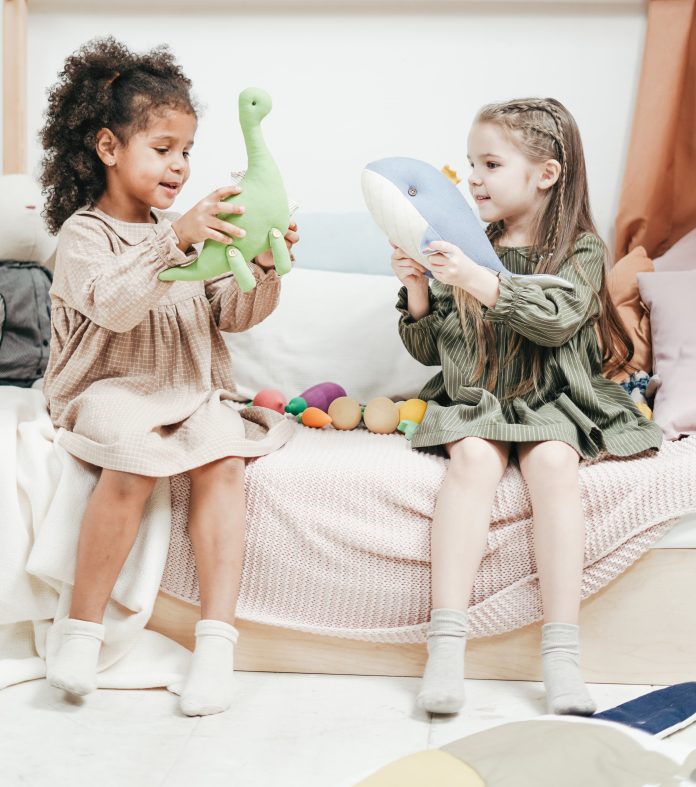Children thrive with hands-on, interactive learning opportunities. The best way to learn is by doing and for children, that means playing. It’s how they learn, how they experience the world around them and a critical part of development. Play is never meaningless.
Children may use toys to imitate real life events they’ve experienced. Adults can use play as a tool to navigate difficult or new emotions a child may have trouble vocalizing. Not only does this build communication and vocabulary- it can boost self esteem and confidence by practicing situations with varied outcomes in a secure environment.
Imaginative play gives children a safe haven to test the outcomes of different scenarios. Allow children to get creative and dream up anything their mind and heart desire without judgment or correction. Providing an environment where play is encouraged and supported is crucial for deep learning as well as social and emotional development.
“Discovery learning” includes intentional open ended, child led play (where the child determines the direction of learning). This promotes critical thinking, problem solving, boosts confidence and autonomy. Play develops fine motor skills and cognitive abilities.Children don’t need flash cards to learn colors and shapes. They can easily learn with toys. Use descriptive words: “Pass me the green block please!” Or by asking questions “ Which is a circle?” Many preschools teach writing with finger paint, drawing in sand or constructing letters out of dough. For a child, this has a more lasting impression.
There have been countless studies that prove directive teaching (lecture) is ineffective. A 2019 Harvard study found that students learned more when engaging in active- learning compared to instruction based (lecture) learning. When students are actively involved in their studies, they are more likely to retain information, be successful and fully understand the subject matter.
Jean Piaget, renowned psychologist dubbed the “Father of Child Development” viewed play as integral to development of intelligence. His famous theory of play claims that as a child matures, his environment and play should evolve to encourage cognitive and linguistic development. It applies to children of all ages. Young children prefer “attachment play” which requires close proximity, supervision and interaction, but it doesn’t mean interrupting their process. As a child gets older, all that’s necessary is a simple demonstration or brief presentation followed by the space to make their own “mistakes.” There is no need for correction, they will know when they’ve achieved the desired result. We can support them by asking questions requiring them to draw their own conclusions.
How can we achieve this space for growth and learning? Set up a variety of materials and step back. Provide no prompts, no instructions. Remember, not all play needs to be “constructive” with a goal in mind. Allow your children to get their hands dirty and make a mess. Watch them discover, explore and uncover the answers to their own questions. Resist the urge to intervene. Without disruption, simply observe a child and watch what unfolds. It is fascinating. Play is
where social and cognitive connections develop. Watch as their eyes light up with the discoveries they’ve made.
“Each time one prematurely teaches a child something he could have discovered himself, that child is kept from inventing it and consequently from understanding it completely” says Piaget. The greatest gift we can give to our children is not to do for them but to give them the tools to do for themselves. Hands on learning achieves this through trial and error in real life participation. The best way to teach is to let them do and most especially let them play.












 20 lucky winners will win $500 each in prizes totaling $10,000.
20 lucky winners will win $500 each in prizes totaling $10,000. 